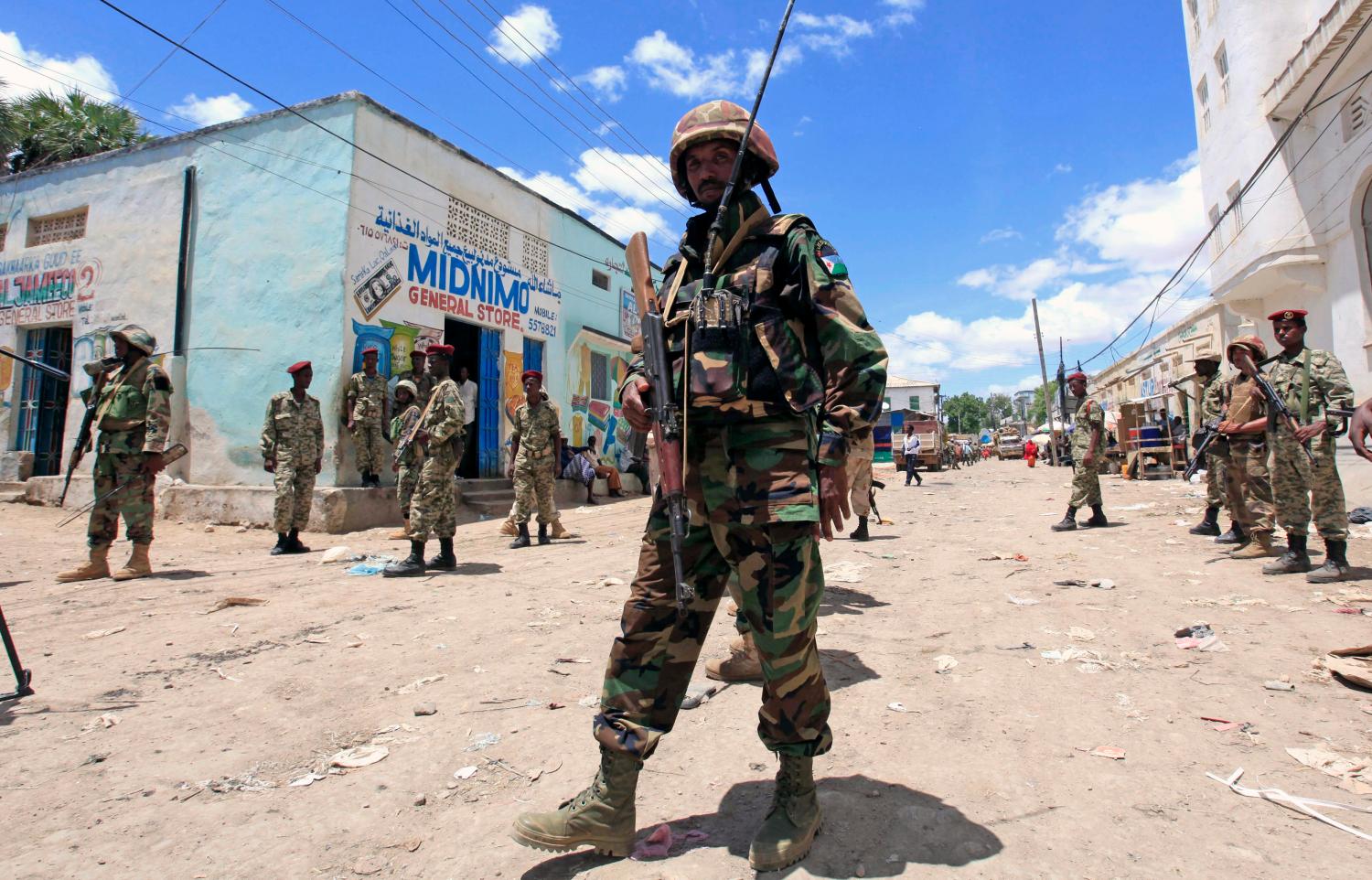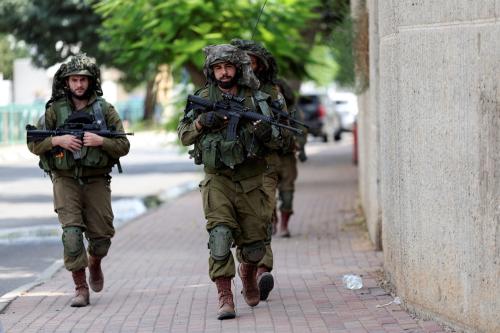Editor’s note: The following is an excerpt from the chapter, “DDR – A Bridge Not Too Far: A Field Report from Somalia,” produced by Vanda Felbab-Brown for the new United Nations University book, “UN DDR in an Era of Violent Extremism: Is it Fit for Purpose?” (UNU, June 2015), edited by James Cockayne and Siobhan O’Neil.
Somalia provides a crucial case-study of the new challenging environment in which the United Nations is increasingly being asked to undertake or support the disarmament, demobilization, and reintegration (DDR) of ex-combatants. This new challenging context entails ongoing military operations and counterterrorism activity in the absence of a peace deal or framework. In Somalia, the government is battling the jihadi terrorist group Shabab, with the military support of the African Union Mission in Somalia (AMISOM) and with non-military support from the United Nations. In various degrees of coordination with the Somali government, a variety bilateral counterterrorism missions are also underway in the country.
This field report describes and assesses the DDR programs under way in Somalia. In the spring of 2015, these included several DDR programs receiving UN assistance and several emerging DDR programs in various subregions of Somalia seeking UN assistance. All of the programs are small-scale and sometimes nascent, addressing a small portion of the existing, and likely future, needs. They focus exclusively on ex-Shabab defectors and combatants, and some of the DDR programs seem likely to include individuals who are more accurately described as ‘detainees.’ Although little political will currently exists in Somalia to offer DDR services to non-Shabab armed actors, such militias, clan forces, or other state, counterterrorism, or irregular armed groups, in the long term, Somalia is unlikely to achieve peace unless they too are disarmed and integrated into Somali society and non-violent political processes. At least eventually, DDR programs should focus on them as well.
This report highlights the key considerations, accomplishments, and challenges of the DDR efforts in Somalia’s highly complex and difficult operating environment. It also makes recommendations to further improve those DDR efforts. The companion essay in this collection, by Vanda Felbab-Brown, more explicitly draws lessons and considerations for other cases in similar difficult environments.
The following are some of the key findings of this report:
- The DDR processes with the most intensive and direct UN engagement – namely at the Baidoa DDR facility – come closest to compliance with the United Nations-adopted Integrated DDR Standards[1] (IDDRS). Nonetheless, even this DDR program faces serious challenges and suffers shortcomings.
- Overall, among the key problems are limited-to-no transparency regarding entry and exit from DDR processes, with Somali national and subnational security and intelligence services controlling both. Entry criteria are based on ill-defined risk categories. Decisions regarding eligibility for inclusion into DDR processes and exit from them are made for the most part in apparently arbitrary ways. The fact that the national and local Somali intelligence and security services determine who is released from the DDR programs, and often do not release participants after their completion of the DDR programming, means that in practice there is a strong overlap between the DDR programs and detention.
- The problematic nature of voluntary consent to participating in the DDR efforts is further compounded by the fact that many ex-Shabab members are tried in military courts and often sentenced to death in highly arbitrary processes. This raises questions of duress: participating in a DDR program might be seen as the only alternative for defectors/detainees. Conversely, however, and some participants do not want to leave the DDR facilities, fearing retaliation from Shabab, rivals, aggrieved communities, or the Somali government. Moreover, overall, ex-Shabab members and communities often believe that their safety is enhanced by the existence of DDR efforts.
- The Somali government and international partners such as AMISOM have only slowly and gradually come to accept some responsibility for detainees and defectors. Somali governmental actors expect tangible international support for DDR, with some even openly threatening that they will have to execute detainees and defectors unless the international community provides sufficient DDR funding and staffing.
- The protection of the rights of vulnerable groups, notably women and minors, and the maintenance of related standards for them, poses difficult problems. The Somali government has struggled and at times been outright unwilling to meet the special needs of some in DDR/detention. International funding particularly for extending DDR services to women has also been lacking. Structural and cultural constraints also make it challenging to deliver optimal DDR and other services to these two groups. Nonetheless, the inability to meet optimal standards should not preclude delivering any assistance.
- The effectiveness of the design and implementation of the DDR programs is also compromised by the UN and other international actors’ limited physical access amidst very difficult security conditions, and high political sensitivities and compromises. While engaging in deradicalization efforts to varying degrees, and defining the objective of the DDR programs as maximizing the number of Shabab defectors, the UN-supported program at Baidoa as well as other DDR efforts are still in the process of defining their relationship to counterterrorism efforts. The United Nations DDR office in Somalia officially maintains that its efforts are not part of counterterrorism operations.
- Ad hoc, short-term, and uncertain financing compounds the challenges of the programs.
- Despite the problems of the DDR processes in Somalia, the UN engagement with DDR issues in Somalia has substantially improved the overall DDR efforts. It has also likely saved lives. Indeed, UN engagement with DDR in Somalia should be strengthened and empowered.
- Nonetheless, the international community needs to judge carefully at what point its engagement in suboptimal processes and with problematic official interlocutors still produces sufficient humanitarian benefits and reinforces conflict mitigation, and at what point it merely encourages moral hazard and blackmail by presumed local partners.
This report proceeds as follows: After describing the methodology of the field research and data sources, the report provides a background overview of the current DDR efforts in Somalia and a brief history of previous DDR efforts in the country. In the subsequent section, the report discusses the key operational considerations and challenges for current DDR programs, including:
- legal definitions;
- the relationship of DDR efforts to counterterrorism activities;
- entry and eligibility criteria;
- exit/release decisions and processes;
- treatment of DDR participants in the programs, including the issues of protection of the rights of women and children;
- programming for deradicalization and other efforts to counter violent extremism;
- post-release economic opportunities; and community reinsertion assistance.
The report concludes by offering recommendations.
The full book chapter can be found here.
[1] United Nations, Integrated Disarmament, Demobilization and Reintegration Standards, 2006, http://www.unddr.org/uploads/documents/IDDRS%20Foreword%20and%20Acknowledgements.pdf.




